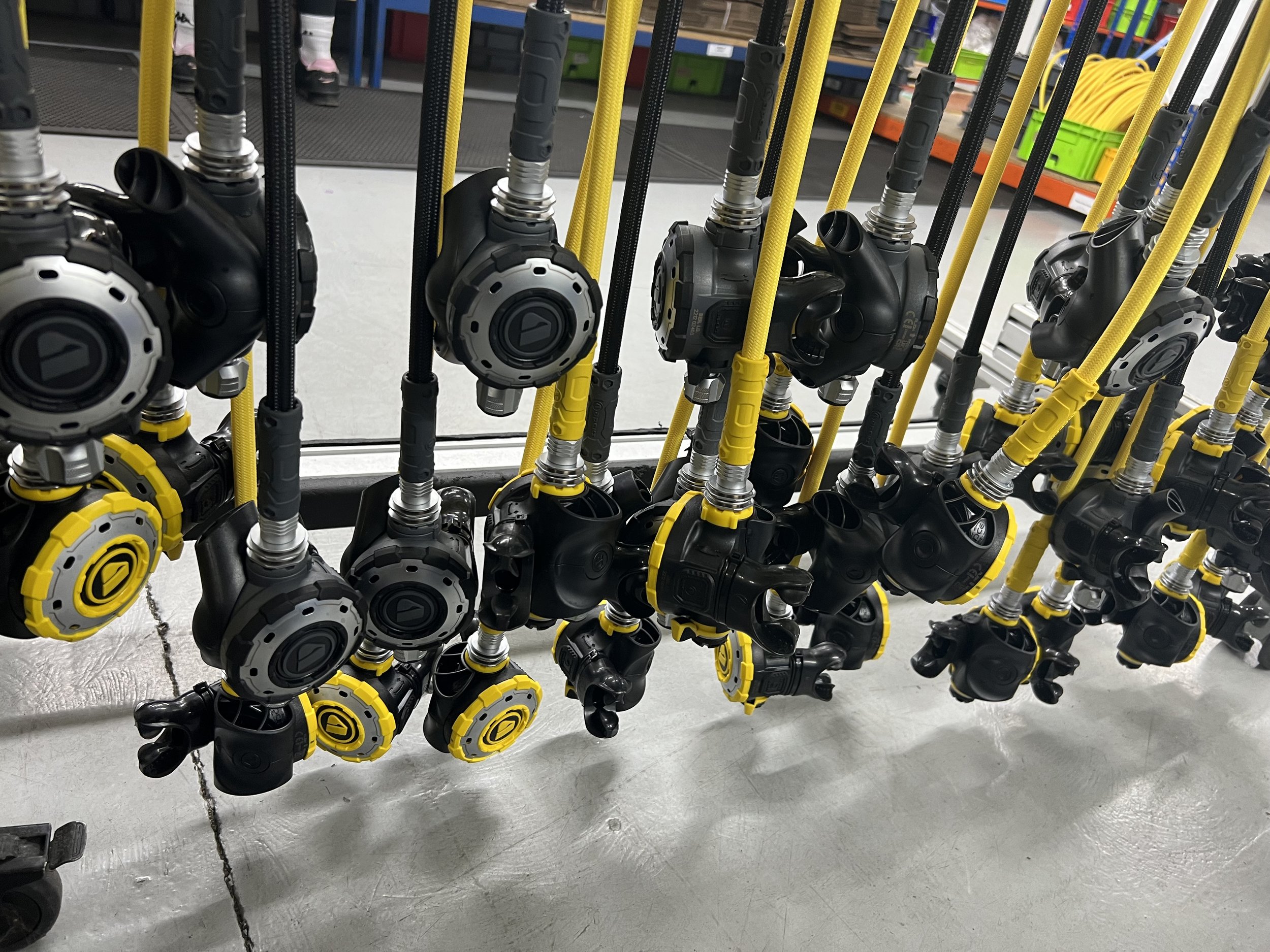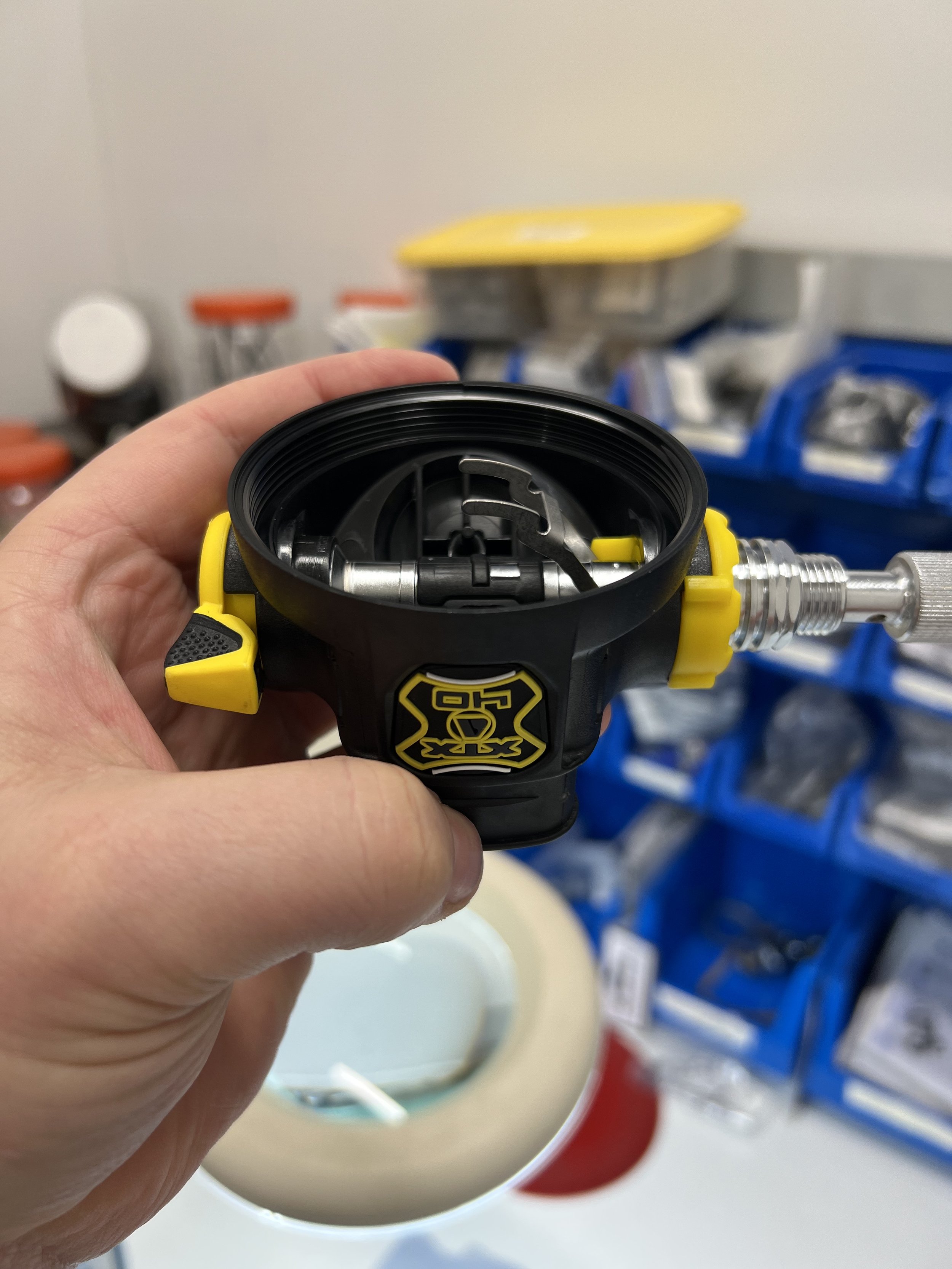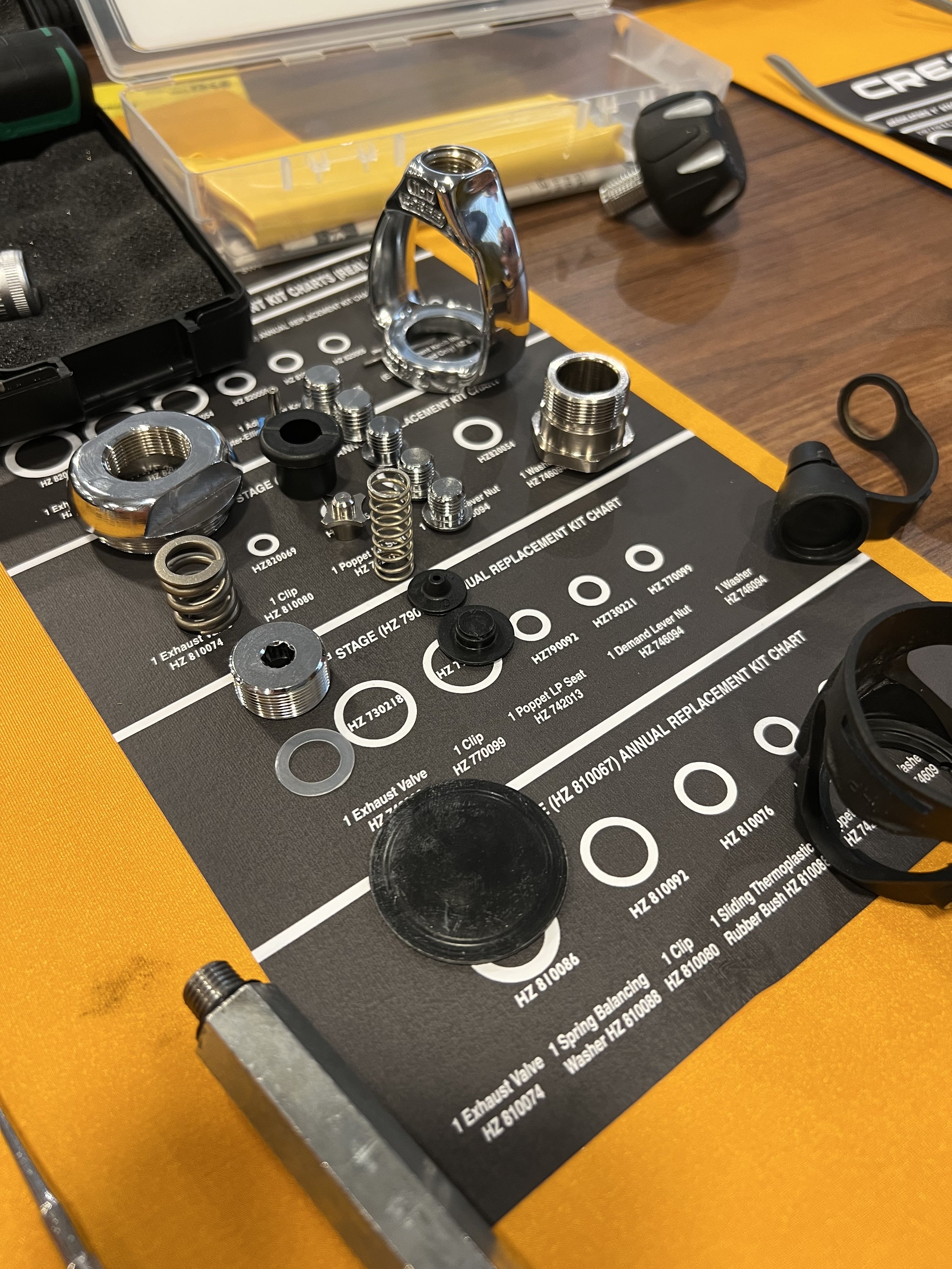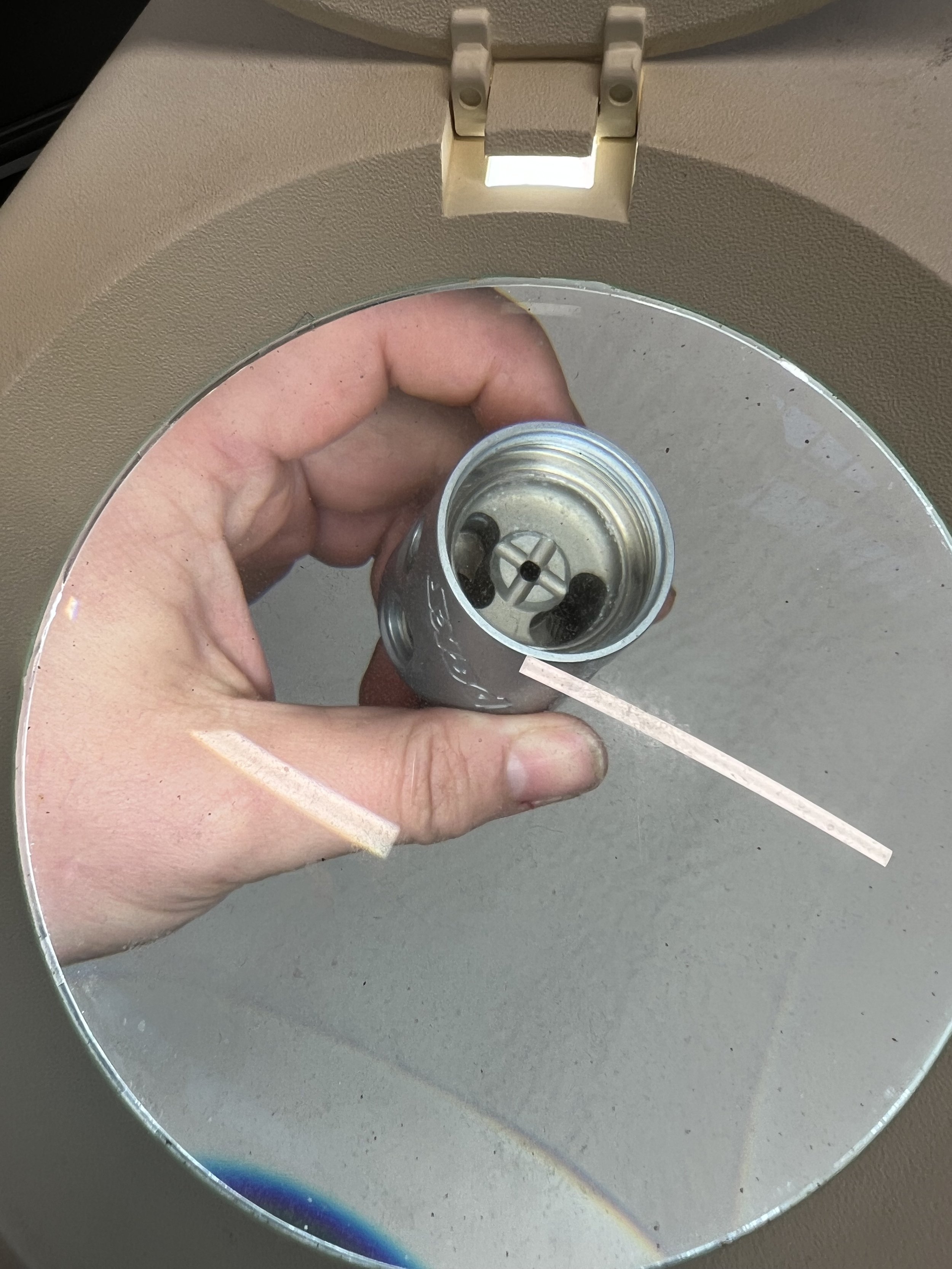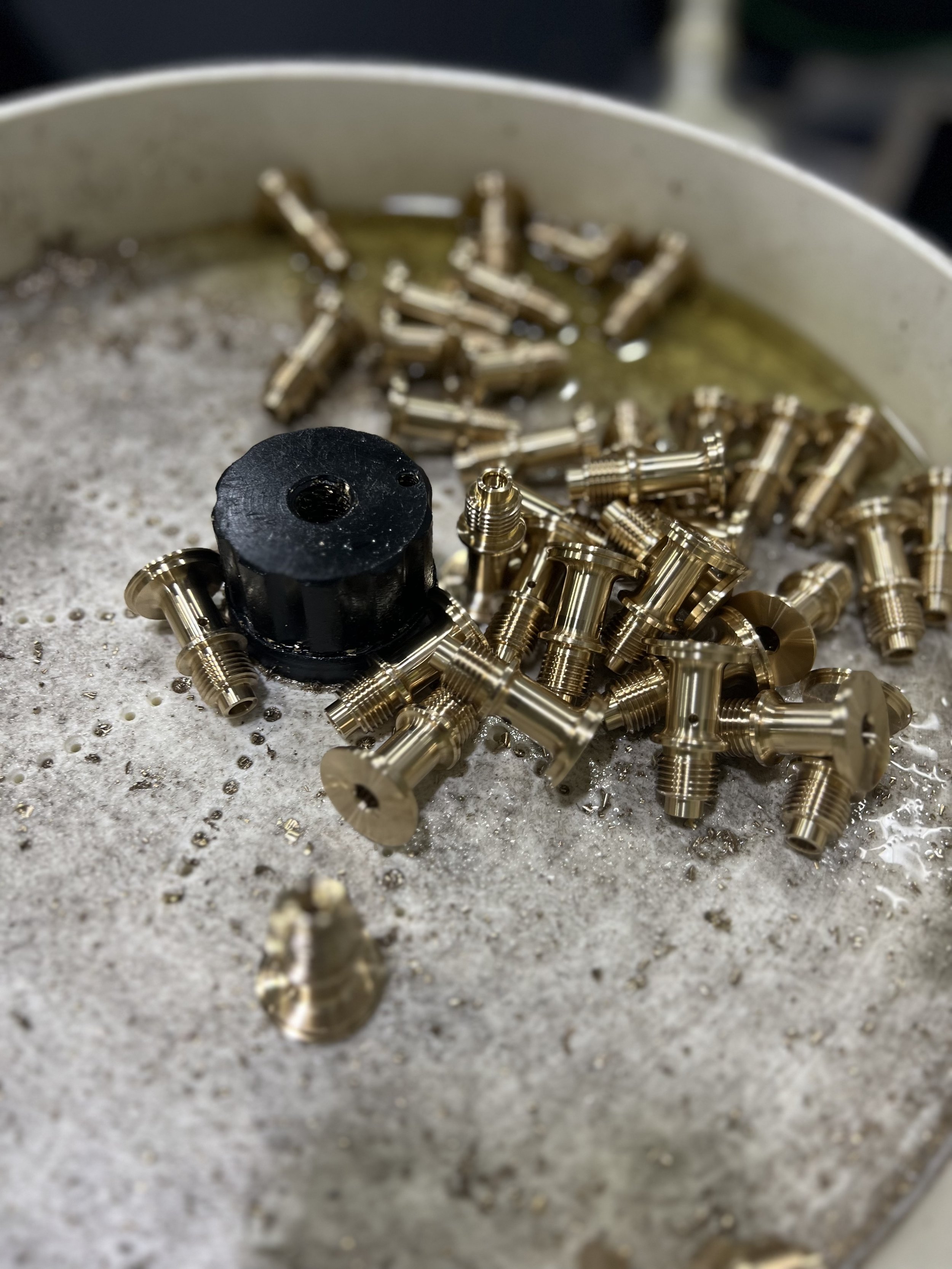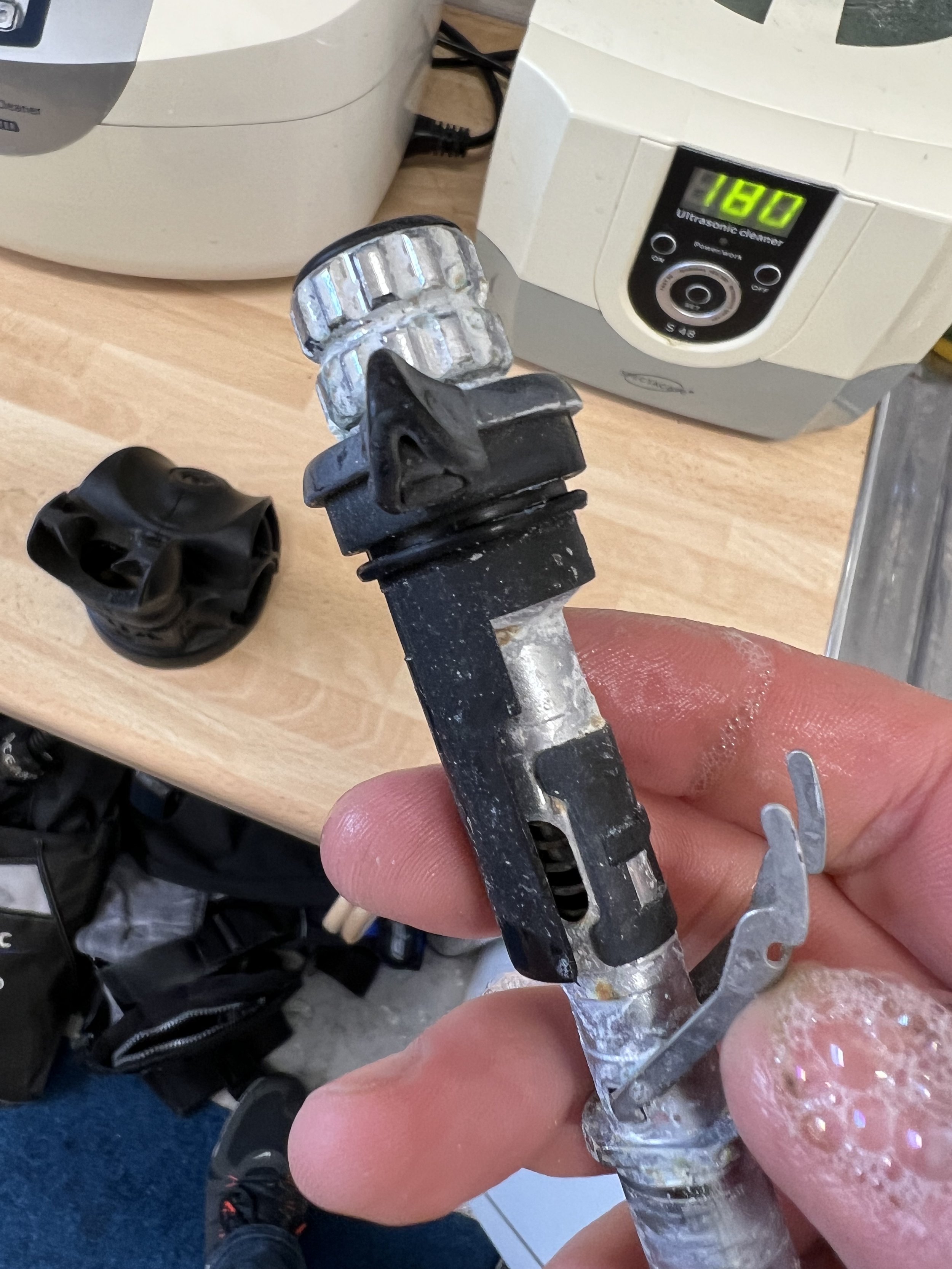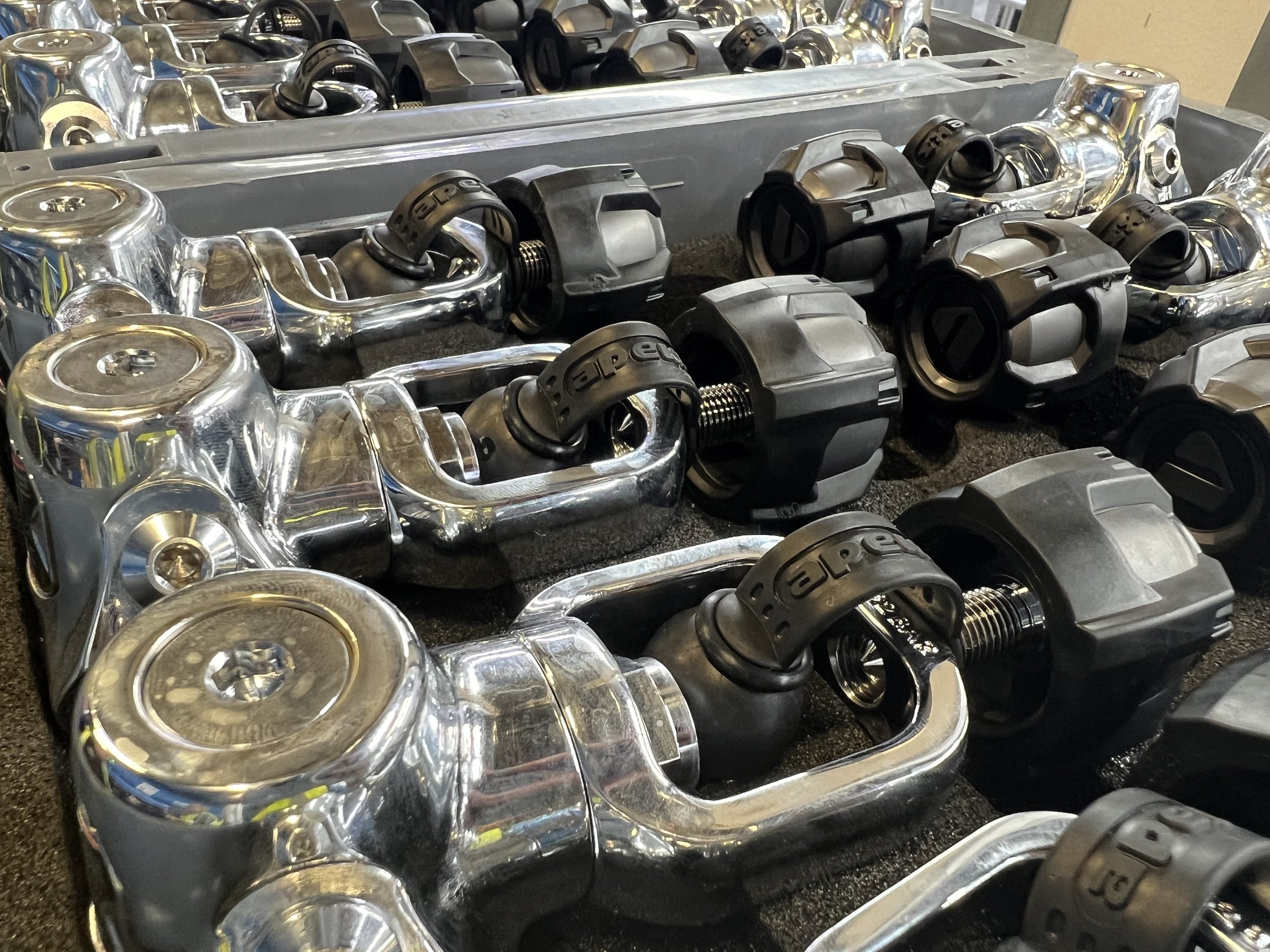The Importance Of Regulator Servicing
Regulators are by far one of the single most expensive pieces of equipment that a diver will ever buy, but sadly, the cost of ownership doesn’t just stop there…
The price for an annual service can set you back anywhere up to £150 subject to brand and usage, but is this really necessary or just another way of getting you to part with even more of your hard earned cash?
In this blog, we want to provide you with an insider look into the process of regulator servicing and explain why its important that you adhere to manufacturer guidelines for keeping your gear in the best possible shape.
UNDERSTANDING SCUBA REGULATORS
A regulator is an essential piece of equipment which, for the most part, enables a diver to breath underwater.
A set of regulators is made up of a series of simple components which primarily work together to deliver gas to the diver. They also provide gas to other pieces of kit such as a BCD, drysuit or DSMB.
The technology inside scuba regulators has evolved significantly since the introduction of the first demand system in 1864, but knowing exactly how vital this essential piece of breathing equipment is, it has me wondering why anyone wouldn’t want to keep them maintained to near perfect condition.
Why We Cant Breath Directly From A Scuba Cylinder
In short, the breathing gas in your scuba cylinder will likely to be pressurised to somewhere between 2-300 bar, depending on the kind and where it was filled. At this pressure, it would be impossible (not to mention incredibly dangerous), to even try and breath directly from it, so it’s vital that we reduce the pressure to a safe or ambient level.
Regulators are designed to function through a series of stages, all of which are necessary to reduce the pressure stored in the cylinder to a safe breathable level. At the surface, the ambient or atmospheric pressure in which all living things breath is 1 bar or 1 ata (atmospheres absolute), so as you can see, there is a huge difference between the pressure in relation to how we breath naturally and the stored pressure of a fully filled scuba cylinder.
The Regulator First Stage
Attaching directly to the pillar valve of the scuba cylinder is what is referred to as the first stage of the regulator assembly.
What this component does is significantly reduce the cylinders pressure down through a series of internal chambers to a controlled intermediate or medium pressure (MP), usually somewhere between 9 and 10 bar. This pressure however can vary depending on the regulator manufacturer and whether or not it is cold water rated or not.
The Regulator Second Stage
The second stage or ‘demand valve’ lowers the medium pressure from the first stage down even further to an ambient pressure which is comfortable for the diver to breath at any depth.
As a diver breathes from the second stage and gas is drawn from the chamber, the external pressure from the water pushes against a rubber diaphragm seated directly under the regulators front cover. Pressure from the diaphragm forces against a lever (as seen below), which opens a valve allowing the gas to flow from the first stage. The purpose of this is to try and balance the pressures between the internal and external areas.
Once enough gas or pressure has entered the second stage, the diaphragm is pushed back towards the front cover releasing the lever and the valve is closed.
The second stage essentially uses the ambient pressure of the water to keep the pressure difference below 0.05 bar of whatever depth a diver is diving at. This is where the term ‘demand valve’ originates because as the diver demands gas, the regulator will simply give it to them.
WHY GET YOUR REGULATORS SERVICED?
Regulators, like all scuba kit, are exposed to the elements and require routine maintenance and cleaning, especially if they have been anywhere near the ocean.
Upon returning from a days scuba diving, I always give my kit a quick hosing down with warm water with the regulators and cylinder pressurised to prevent any ingression of moisture into the system. This washes off any contaminants such as sea salt, or other muck and grime picked up from inland dive sites such as quarries and lakes.
There are many signs that your regulators may be in dire need of a service but some of the most common include an increased inhalation effort or harder breath, irregular or unusual bubbling from any part of the sealed system, the intake of water whilst breathing normally through the second stage or ultimately a general catastrophic failure of any of the working parts.
By simply taking the time to maintain and look after your equipment, you are undoubtedly prolonging your service intervals and keeping these costly pieces of gear in a good shape.
Service Guidance
The general recommendation for servicing your regulators depending on usage and condition is to alternate on an annual basis between an inspection and a full overhaul.
A simple inspection involves a technician checking the operation of the regulators and inspecting critical parts, where an overhaul naturally entails fully stripping, cleaning and rebuilding them, whilst replacing all serviceable parts such as o-rings, diaphragms and valve’s.
Where this blog most certainly is not a ‘how to at home guide’, it’s important for a diver to understand exactly why it’s essential to have their regulators serviced or at least inspected at the required intervals, and what they start to look and feel like when they don’t.
WHY SCUBA REGULATORS FAIL
Due to the nature of how regulators function, they are understandably heavily dependent on the use of o-rings which are made from rubber. Over time, physical and chemical changes occur to an elastomer which cause it to lose it’s properties and harden, preventing it from returning back to its original shape. This can also result in an o-ring cracking or splitting altogether.
O-rings in the most part are used to keep water out of vital areas which if compromised, may impede normal regulator operation, may cause corrosion or allow the ingression of salt, sediment or dirt.
Where o-ring failure isn’t the only reason regulators may cease to function, its one of the most common.
LOOKING AFTER YOUR REGULATORS
A few simple tips to help you prolong the life of your regulators:
Always wash your kit off after use, especially after diving in the sea or ocean.
Do not use any method of heat or accelerated drying. This can dry out any grease or stress sensitive parts.
Let your regulators dry completely before putting them away in a box or bag.
Replace the dust cap once removed from the cylinder. This helps protect the threads or internals from damage or the ingression of moisture into the first stage. Remember to ensure both parts are free from contaminants prior to doing so.
Do not store your regulators anywhere where they may be openly exposed for extended durations to undue warmth or moisture, such as a loft or cellar.
Always adhere to manufacturer specifications, ratings and guidance in relation to use, especially when using with Enriched Air Nitrox (EANx)
If in doubt, take your regulators in for an inspection. Your local authorised service centre will always happily take a look at them for peace of mind.
WHY IS SERVICING SO EXPENSIVE?
Regulator servicing requires a series of manufacturer ‘kits’.
A basic set of regulators by example (1st stage, 2nd stage & octopus) requires 3 service kits which in themselves are somewhat costly for a centre to obtain.
The time required for an overhaul can be entirely dependent on the condition and the complexity of the regulator, but this can result in several hours under certain circumstances.
When considering the parts and time needed, a regulator service isn’t actually bad value for money and when contemplating the job these things actually do, I’d argue it’s always going to be money well spent.
WHY APEKS ARE THE SEPE DIVING REGULATOR OF CHOICE…
We make no secret of the fact that SEPE Diving considers most equipment from Aqualung and APEKS to be some of the best quality dive gear on the market. We have consistently found these brands to be reliable, durable and built to last.
As a technician I’ve been handed regulators in some awful conditions and have pretty much always been able to get APEKS regs back in full working order with a good service and a few common replacement parts.
Several things to consider in relation to servicing is not just the cost, but also the availability of spares. Servicing costs for brands such as Poseidon and Hollis can come in at eye watering amounts, with the availability of kits for slightly older models being increasingly thin on the ground.
The Aqualung group however are generally pretty good on spares, and have in recent years taken a ‘one kit fits all’ approach to regulator servicing, meaning most centers will likely stock a service kit to overhaul your regulators without the need for a special order from France, saving you both valuable time and money.
MY EXPERIENCES AS A TECHNICIAN
I first began servicing in late 2019 and it’s fair to say that since then, i’ve probably encountered most regulator related problems. Ive discovered everything from dead fish to chewing-gum inside and on more occasions than I care to admit, I have stood dazed and confused as to how some sets are still functioning given their condition and obvious level of neglect.
Unfortunately, we all now live our lives with more access to the internet than ever, and this has seen a steep increase in do it yourself ‘Youtube home servicing’ undertaken by those without the correct tools, qualifications or experience. Where 9 out of 10 times most of these sets can be overhauled and turned around, sometimes the damage caused through improper handling and poor maintenance can result in a very costly repair for the customer.
Part of the overhaul process when servicing scuba regulators is making sure that they are set to the correct pressures and draw effort which cannot be done without specialist calibrated testing equipment. Where some of these enthusiasts may believe that they have serviced or adjusted their own regulators accordingly, they may not become fully aware that they haven’t until they find themselves at depth where the pressure and demand forced upon them is far greater than that of the surface.
Where I initially intended for this blog to generally serve as informative, I would like to take this opportunity to strongly caution anyone who is untrained, unqualified or inexperienced from attempting to open or service their own regulators for their own safety. Trust me, even in my limited time I have worked in the industry long enough to witness the results of people having incorrectly done so.
WHY I BECAME A TECHNICIAN
Naturally, every journey has to begin somewhere. Mine followed hours and hours of observing probably one of the industries most experienced engineers strip and rebuild regulators time and time again.
I had a lot of respect for the servicing guys, after all, a divers regulators are what keep them alive whilst in the water so naturally, there is a huge amount of responsibility placed upon a technician to ensure that regulators are serviced exactly to specification. I never understood how these guys knew exactly where to grease, which o-rings to replace or how all of the many parts even went back together, but I was determined to one day find out for myself.
Almost 4 years down the line and many service courses in, It’s fair to say that I have thankfully acquired many tricks of the trade having graciously benefited from decades of experience learning from several highly skilled and reputable technicians throughout my time in the industry.
SERVICING: IN SUMMARY
SHOULD YOU GET YOUR REGULATORS SERVICED?
Yes!
HOW OFTEN SHOULD SHOULD YOU GET YOUR REGULATORS SERVICED / INSPECTED?
Annually
(depending on how often and the type of diving you do)
WHAT IF YOUR REGULATORS HAVE HARDLY, OR NOT BEEN USED SINCED THE LAST SERVICE?
As explained earlier in this blog, rubber hardens over time, so there is every possibility that your regulators could still experience a failure having had little to no use since their last service.
WHERE CAN I GET MY REGULATORS SERVICED?
SEPE Diving can service most APEKS and Aqualung regulators. Check The store for more details
For anything else, SEPE Diving proudly recommends Academy Divers Limited.
Academy Divers Limited is a manufacturer authorised service centre for many brands of regulators.
For a fee, Academy Divers can arrange the collection and return of your regulators*
*where available


